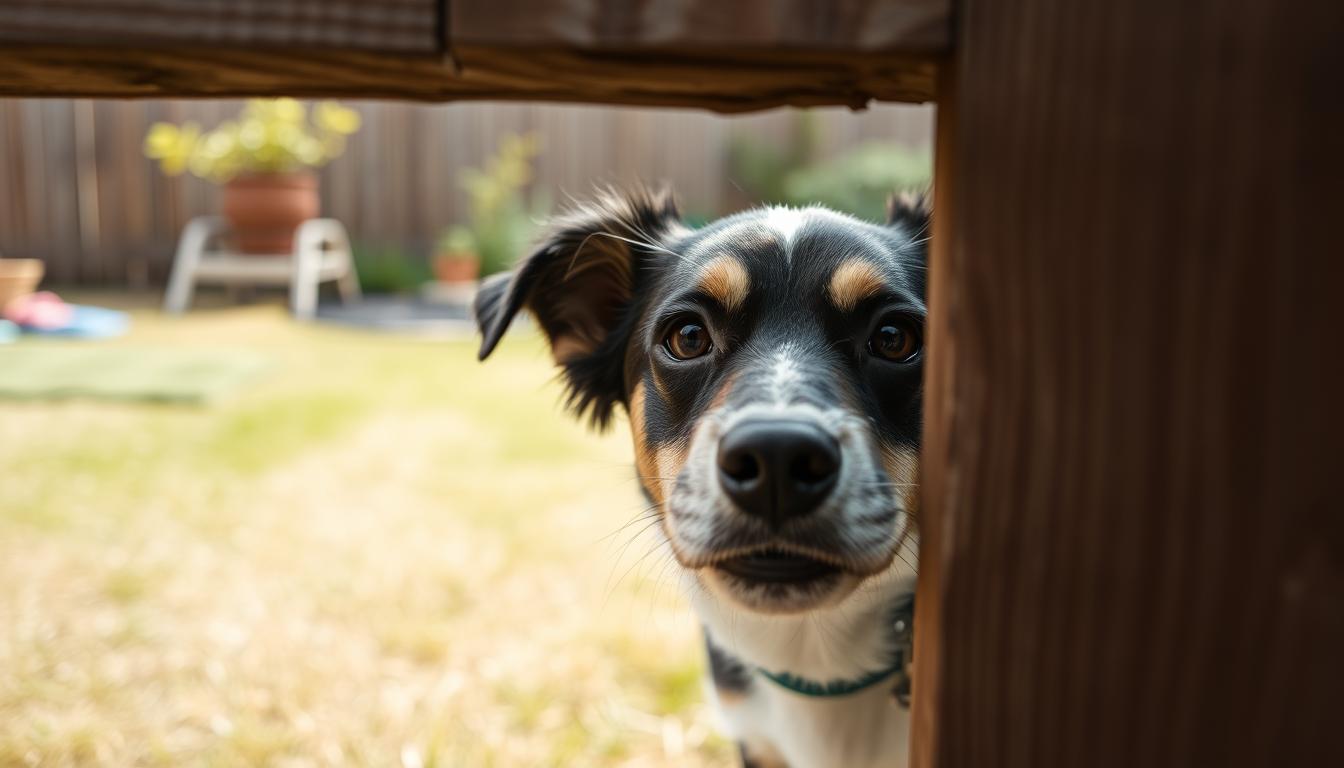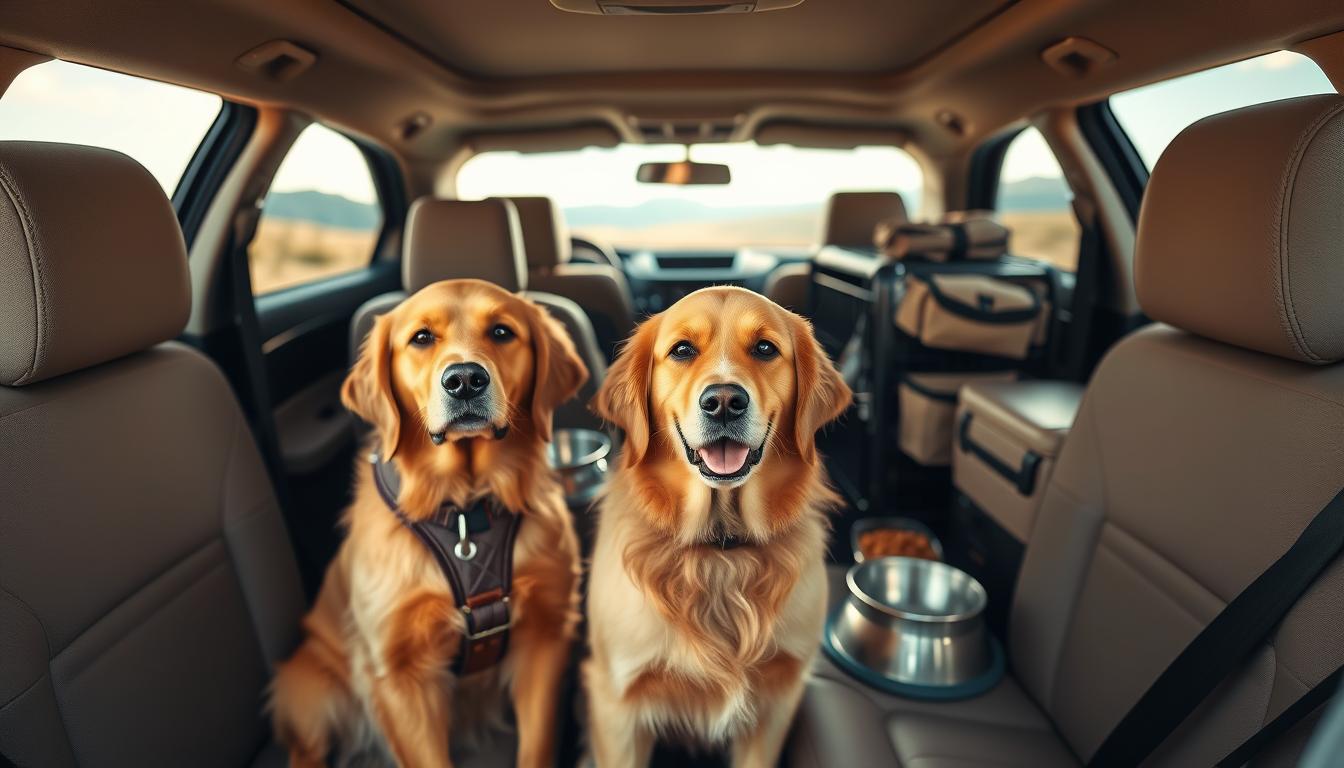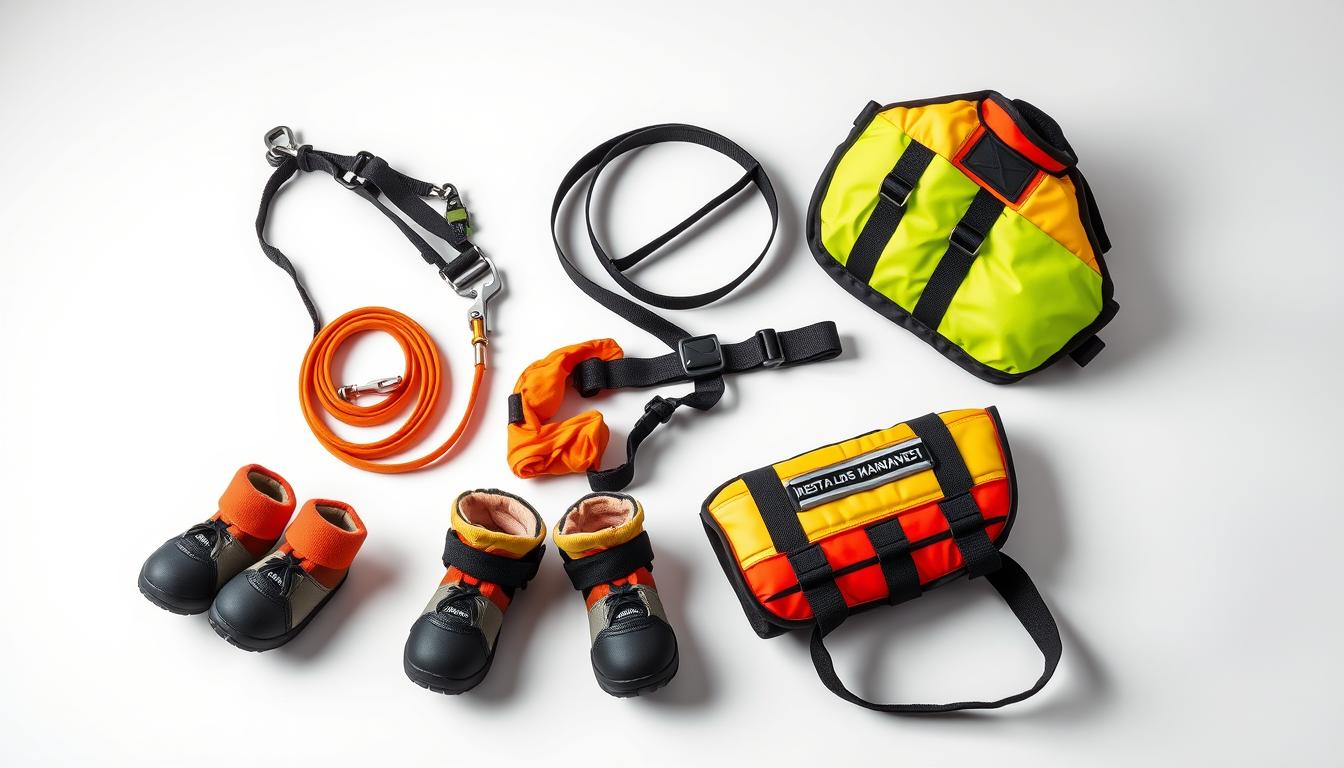Why Dogs Try to Escape Their Yards
Understanding the root causes of your dog’s escape attempts is the first step toward preventing them. Dogs typically escape for specific reasons, and identifying these motivations will help you implement the most effective solutions.
Understanding why your dog wants to escape is crucial for finding effective solutions
Common Escape Triggers
- Social Isolation and Boredom – Dogs are social creatures. When left alone for extended periods without stimulation, they may seek companionship or entertainment elsewhere.
- Sexual Roaming – Intact (non-neutered/spayed) dogs have strong instincts to find mates, especially when they detect a potential partner nearby.
- Fear and Anxiety – Loud noises from thunderstorms, fireworks, or construction can trigger escape attempts as dogs seek safety.
- Prey Drive – The sight of squirrels, cats, or other small animals can activate a dog’s natural hunting instincts, compelling them to chase.
- Separation Anxiety – Dogs with separation anxiety may escape in an attempt to find their owners when left alone.
Breed-Specific Tendencies
Some dog breeds are more prone to escaping due to their natural instincts and physical abilities:
- Huskies – Known for their incredible determination and digging abilities
- Beagles – Follow their nose wherever it leads them
- Jack Russell Terriers – Energetic and excellent jumpers
- Border Collies – Intelligent problem-solvers who can figure out gate latches
- Greyhounds – Can easily jump over standard fences
- Dachshunds – Expert diggers who can create tunnels under fences
Is Your Dog Prone to Escaping?
Understanding your dog’s breed tendencies can help you prevent escapes before they happen. Consider a GPS tracker for additional peace of mind.
Physical Solutions to Prevent Dog from Escaping Yard
Creating physical barriers is often the most effective first line of defense against escape attempts. Here are proven solutions to secure your yard perimeter.
Secure Fencing Options
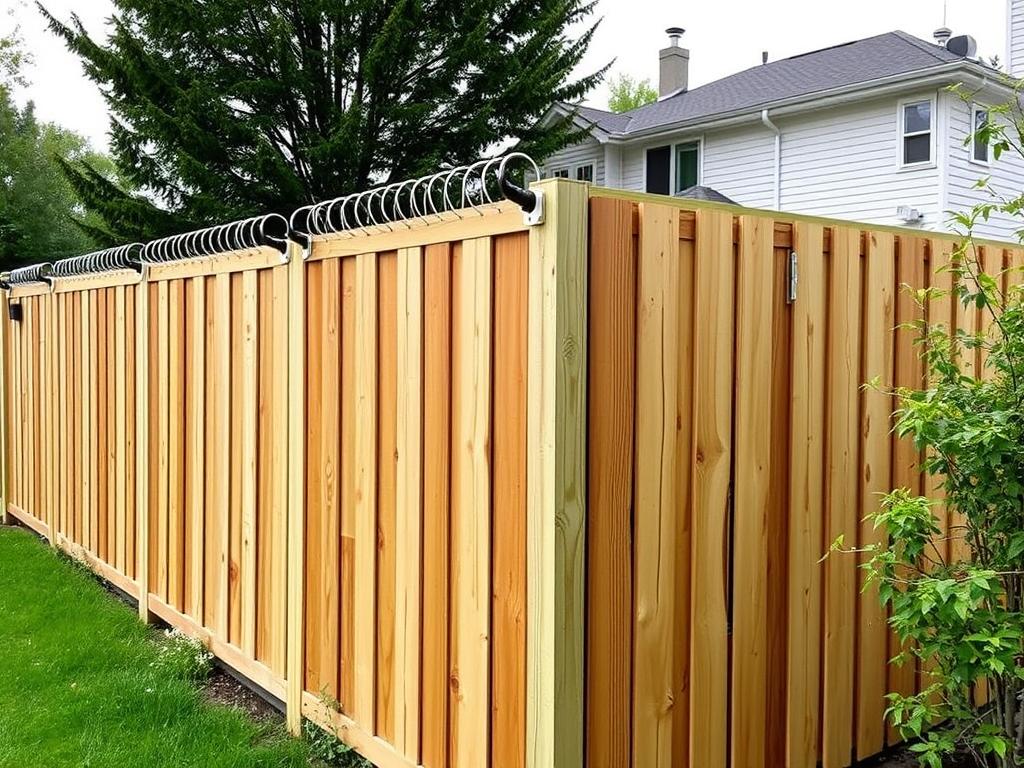
Coyote rollers prevent dogs from getting the grip needed to climb over fences
Top 5 Escape-Proof Fencing Features
- Height – Minimum 6 feet for most breeds; 8 feet for athletic jumpers
- Buried Barrier – Extend fence 1-2 feet underground to prevent digging
- Coyote Rollers – Spinning cylinders at fence top prevent climbing
- L-Footer – L-shaped wire mesh extending inward at the base
- Privacy Slats – Reduce visual stimulation from outside the yard
Common Fencing Mistakes
- Gaps – Even small spaces can be enough for determined dogs
- Low Height – Underestimating jumping abilities
- Climbable Texture – Chain-link fences are easier to climb
- Objects Near Fence – Furniture or structures that can be used as launching pads
- Unsecured Bottom – Failing to address digging behavior
Gate Safety Upgrades
Gates are often the weakest point in your yard’s security. Consider these improvements:
- Self-Closing Hinges – Automatically close the gate if someone forgets
- Two-Step Latches – Require complex movements dogs can’t easily figure out
- Lockable Handles – Add padlocks for maximum security
- Gate Alarms – Alert you when the gate is opened
- Lower Gap Guards – Prevent squeezing under gates
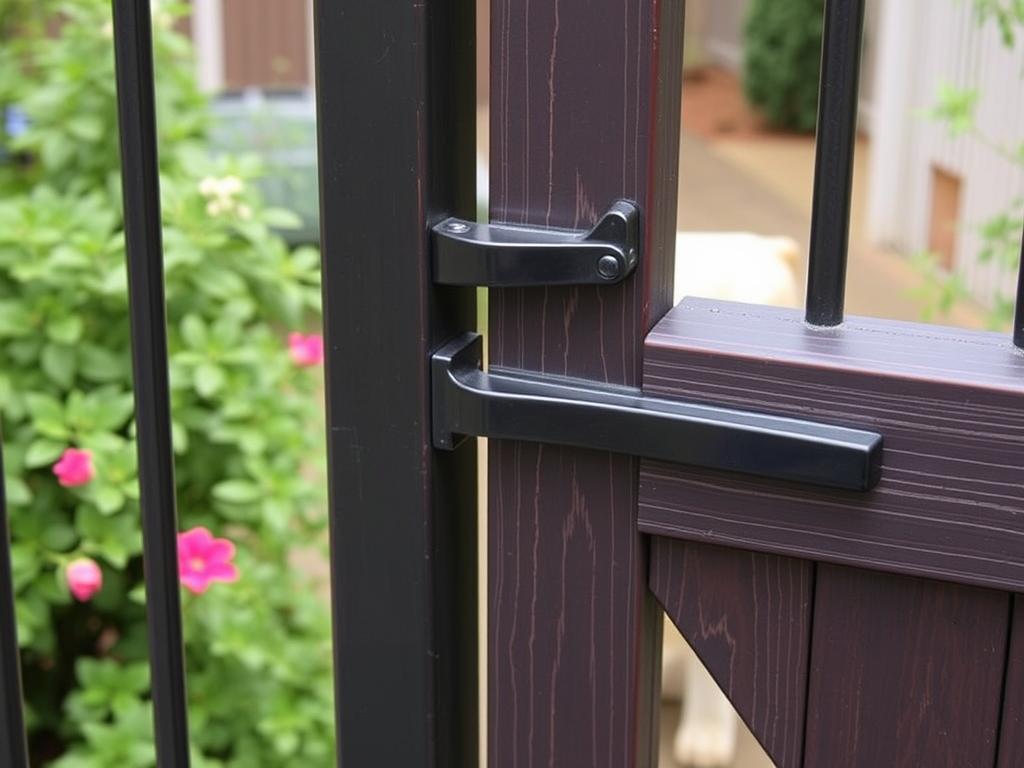
A secure gate with a two-step latch system that dogs can’t easily figure out
Yard Audit: Finding Weak Spots
Take time to thoroughly inspect your yard from your dog’s perspective:
| Area to Check | Common Issues | Solution |
| Fence Bottom | Gaps, soft soil for digging | Bury chicken wire, install concrete footer |
| Fence Panels | Loose boards, damaged sections | Regular repairs, reinforcement brackets |
| Gates | Misaligned latches, gaps | Adjust hinges, add secondary locks |
| Yard Perimeter | Objects that can be used for climbing | Move furniture, planters away from fence |
| Fence Height | Too low for athletic breeds | Add fence extension or angled topper |
Secure Your Yard Today
Invest in quality fencing solutions to keep your dog safe and give yourself peace of mind.
Behavioral Training to Prevent Escapes
Physical barriers are important, but addressing the behavioral aspects of escape attempts is equally crucial. Training your dog to respect boundaries can significantly reduce escape attempts.
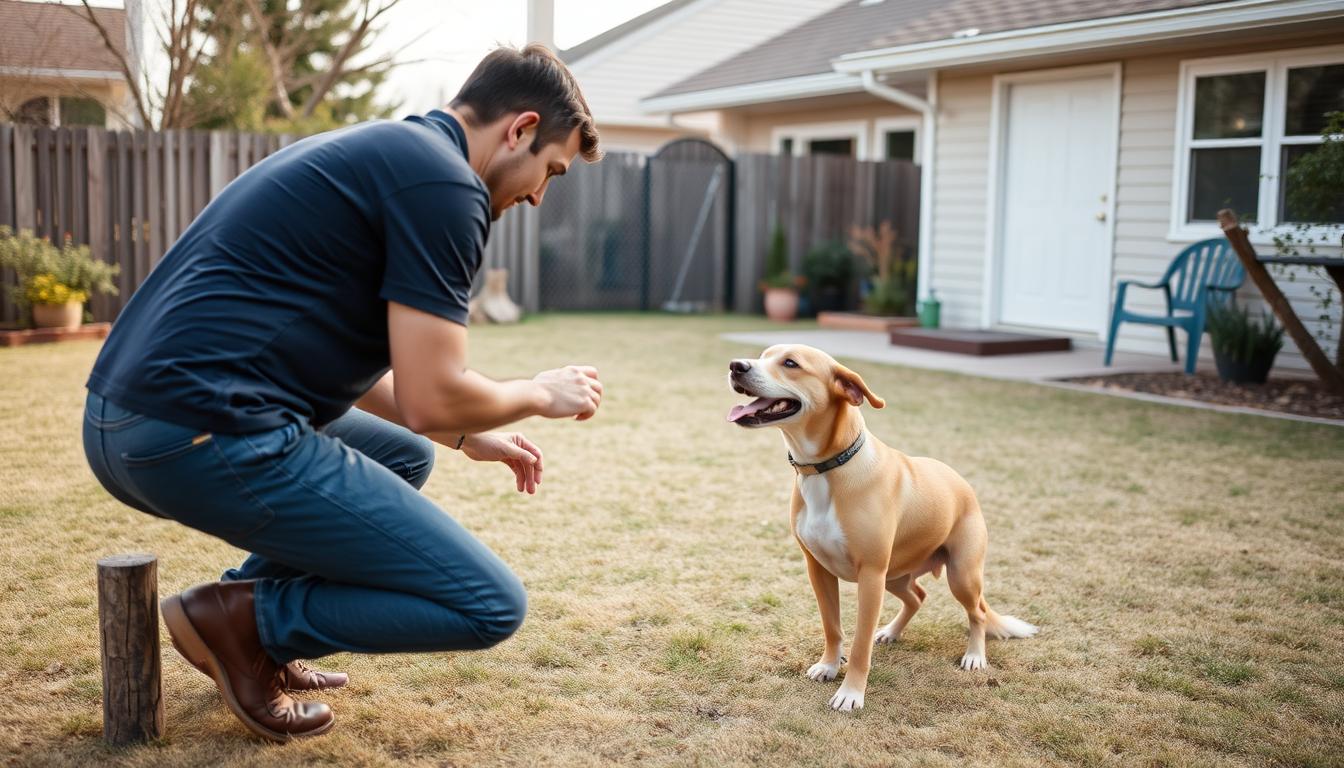
Consistent boundary training helps dogs understand yard limits
Boundary Reinforcement Training
Teaching your dog to respect the boundaries of your yard requires consistency and positive reinforcement:
- Establish Visual Markers – Use flags or other visual cues to mark the boundaries
- Leashed Introduction – Walk your dog around the perimeter on a leash
- Command Association – Use a specific command like “boundary” or “leave it” when approaching the edge
- Reward Compliance – Immediately reward your dog for stopping or turning away from the boundary
- Gradual Freedom – Slowly increase off-leash time as your dog demonstrates understanding
Positive Reinforcement Techniques
Positive reinforcement is more effective than punishment for preventing escape behaviors:
- Reward Staying – Regularly praise and treat your dog for remaining in the yard
- Create Positive Associations – Make the yard a fun place with toys, treats, and attention
- Consistent Commands – Use the same commands and rewards each time
- Never Punish After Escape – Dogs won’t connect punishment with the escape if it’s not immediate
- Redirect Attention – When your dog shows interest in escaping, redirect to a more appropriate activity
Addressing Separation Anxiety
If separation anxiety is driving escape attempts, these strategies can help:
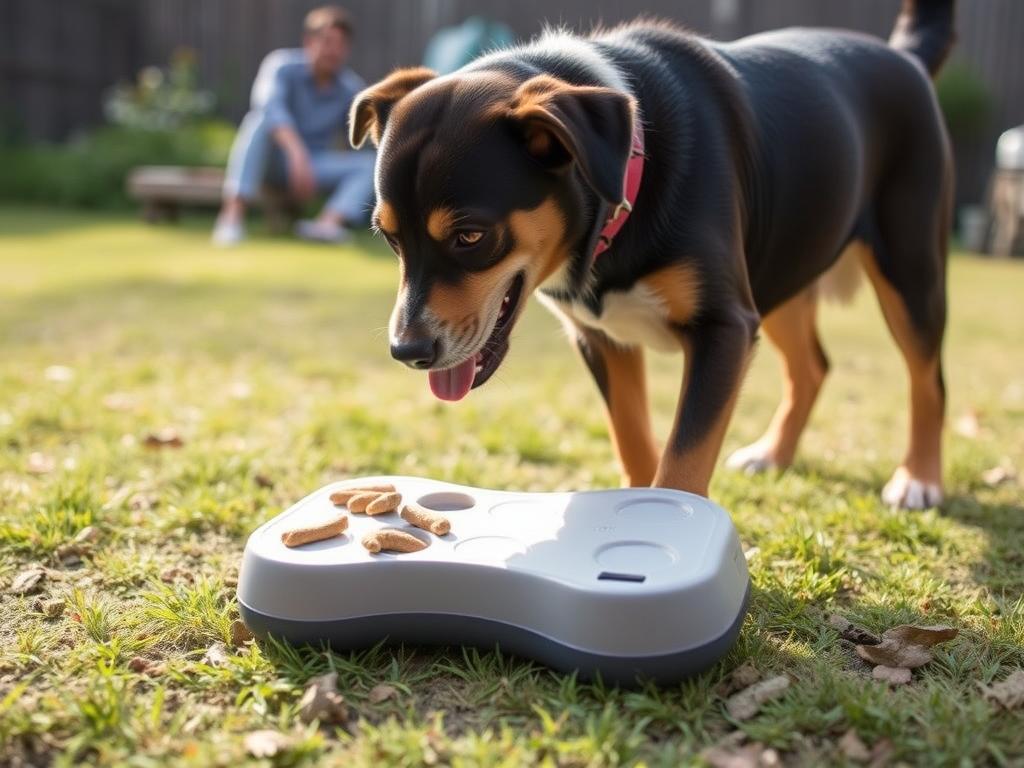
Interactive toys can help reduce anxiety when you’re away
- Gradual Departures – Practice short absences, gradually increasing the time
- Calm Departures and Returns – Avoid emotional goodbyes and greetings
- Interactive Toys – Provide puzzle toys that dispense treats to keep your dog occupied
- Comfort Items – Leave an article of clothing with your scent
- Background Noise – Leave on a radio or TV for comforting background sounds
Keep Your Dog Engaged While You’re Away
Interactive puzzle toys can help reduce anxiety and prevent escape attempts.
Environmental Enrichment: Making Your Yard Dog-Friendly
One of the most effective ways to prevent escapes is to make your yard more appealing than what’s beyond the fence. Creating an enriching environment can significantly reduce your dog’s desire to escape.
Creating a Dedicated “Dog Zone”
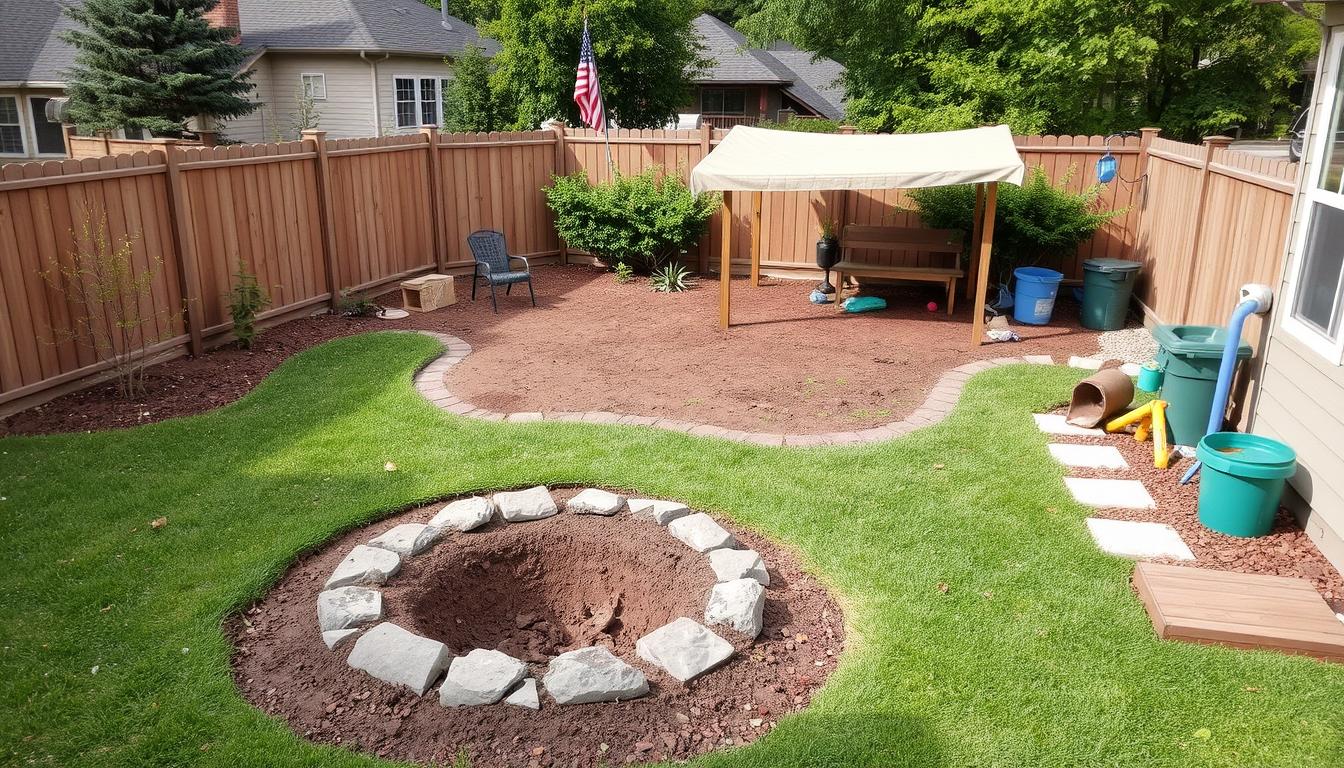
A dedicated dog zone with various enrichment features keeps dogs engaged and content
Design a special area in your yard specifically for your dog’s enjoyment:
- Digging Pit – A designated area filled with sand or loose soil where digging is allowed
- Shade Structure – Protection from sun and rain for comfort in all weather
- Water Station – Fresh water that stays cool throughout the day
- Elevated Platform – A raised deck or platform for surveying their territory
- Comfortable Resting Area – Weather-resistant dog bed or house
Engaging Activities for Outdoor Time
Keep your dog mentally and physically stimulated with these yard activities:
- Scent Games – Hide treats around the yard for your dog to find
- Agility Equipment – Simple jumps, tunnels, or weave poles
- Flirt Pole – A pole with a lure that encourages chasing and jumping
- Sprinkler Play – Water activities for hot days
- Sandbox – For dogs who enjoy digging
- Tug Stations – Secured ropes for independent play
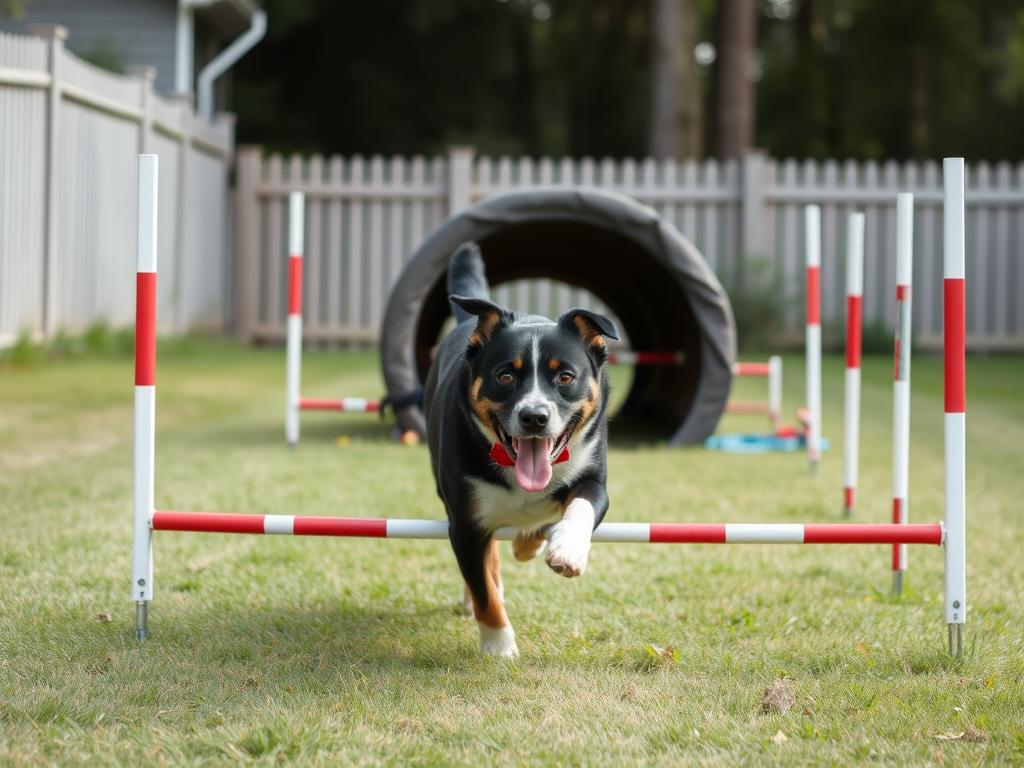
Simple agility equipment provides physical and mental stimulation
Rotating Toys to Prevent Boredom
Dogs quickly lose interest in toys they see every day. Implement a toy rotation system:
- Divide Toys Into Groups – Create 3-4 sets of different toys
- Weekly Rotation – Switch out the available toys each week
- Clean Between Rotations – Wash toys before storing to keep them interesting
- Introduce New Toys – Occasionally add a new toy to the rotation
- Observe Preferences – Note which toys your dog favors and provide similar options
Create an Engaging Backyard
Invest in durable outdoor toys that will keep your dog entertained and less likely to seek adventure elsewhere.
Emergency Protocols: When Prevention Fails
Even with the best preventive measures, escapes can still happen. Being prepared for these situations can help ensure your dog’s quick and safe return.
Identification and Tracking
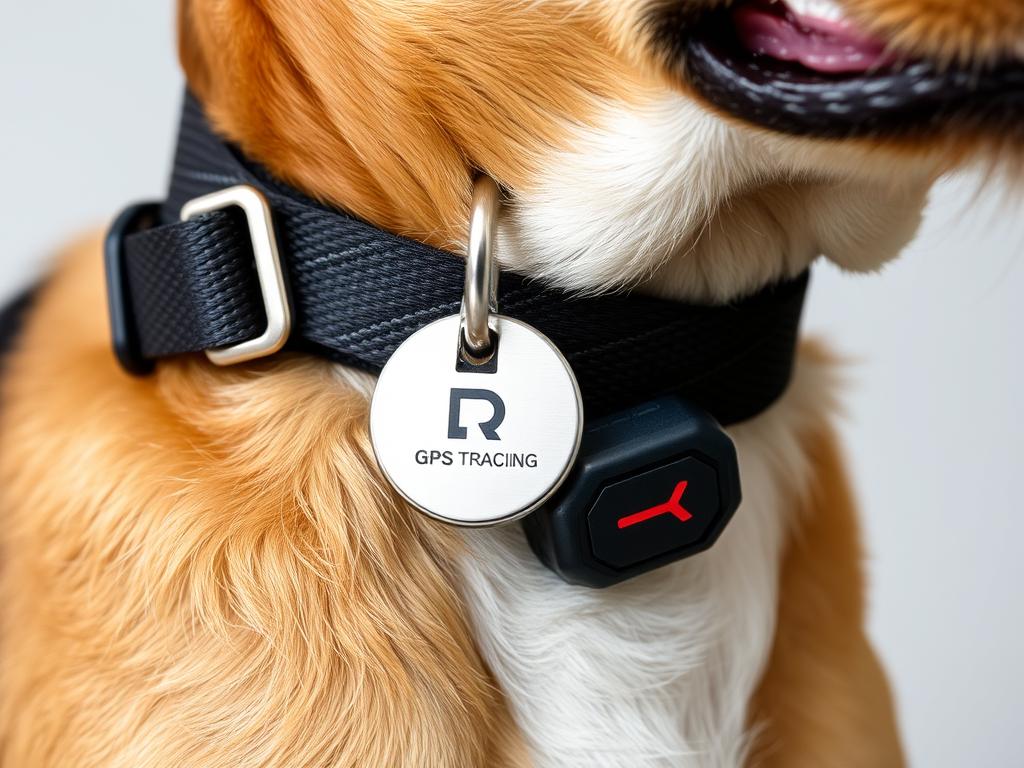
Multiple identification methods increase the chances of a safe return
- ID Tags – Always include your phone number and address
- Microchipping – Permanent identification that can’t fall off or be removed
- GPS Collars – Real-time tracking of your dog’s location
- QR Code Tags – Link to detailed contact information
- Reflective Collar – Increases visibility at night
Teaching a Reliable Recall Command
A strong recall command can bring your dog back even when they’ve started to wander:
- Choose a Distinct Word – Select a unique word or whistle that will only be used for recall
- Start in Low-Distraction Areas – Begin training indoors or in a secure area
- Use High-Value Rewards – Offer exceptional treats reserved only for recall training
- Practice Regularly – Train daily in increasingly distracting environments
- Never Punish After Recall – Always reward coming to you, even if they’ve misbehaved
Neighborhood Alert Strategies
Prepare a neighborhood response plan before an escape occurs:
- Neighbor Network – Exchange contact information with neighbors
- Current Photos – Keep recent, clear photos of your dog from multiple angles
- Description Sheet – Prepare a document with your dog’s details, including any medical needs
- Social Media Groups – Join local pet groups for quick community alerts
- Shelter Contacts – Have contact information for local animal shelters readily available
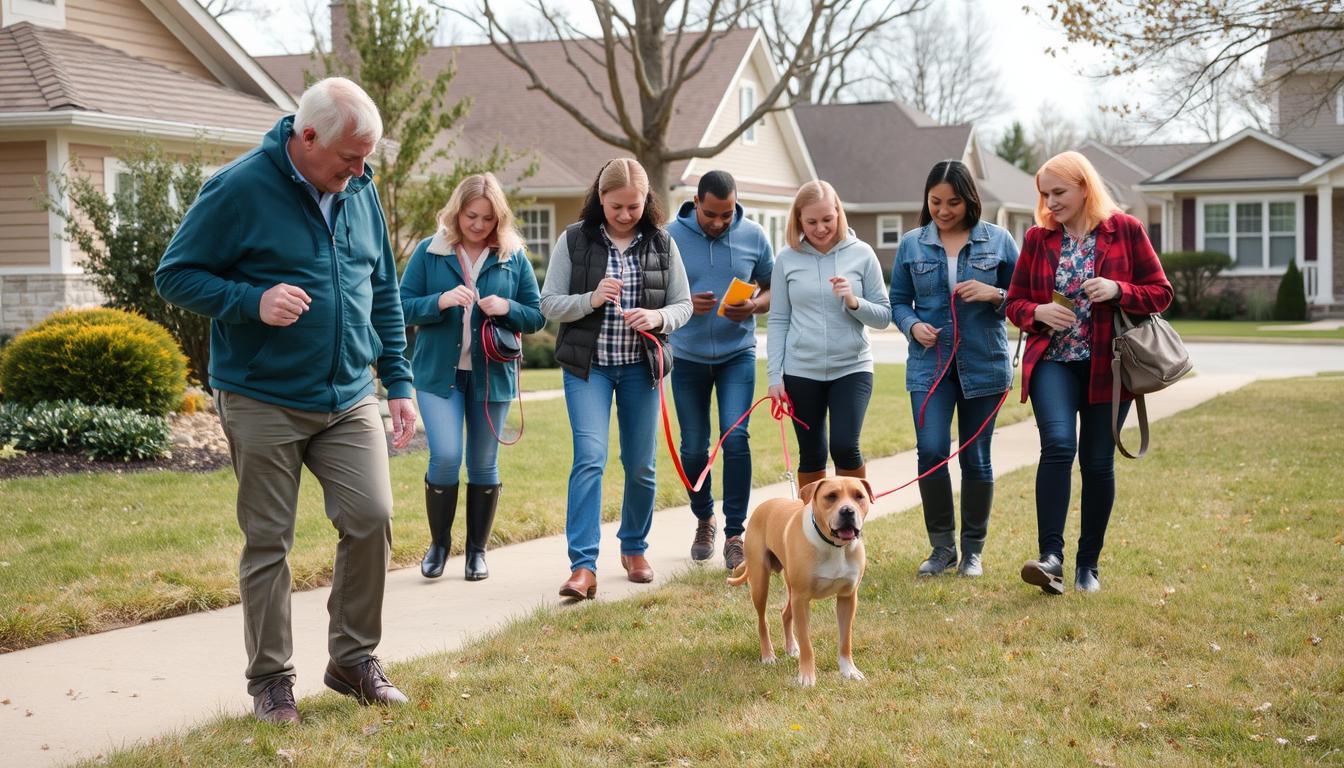
A prepared neighborhood network can help quickly locate an escaped dog
Be Prepared for Emergencies
Don’t wait until your dog escapes to get proper identification. Invest in multiple forms of ID for maximum protection.
Frequently Asked Questions
What’s the fastest way to stop a dog from digging under fences?
The quickest solution is to bury chicken wire along the bottom of your fence, extending 1-2 feet inward at a 90-degree angle. This creates an underground barrier that prevents your dog from digging deep enough to escape. For a more permanent solution, consider installing a concrete footer along the fence line.
How high should a fence be to prevent jumping?
For most medium-sized dogs, a 6-foot fence is sufficient. However, athletic breeds like Greyhounds, Border Collies, and Belgian Malinois may require 8-foot fences. If increasing height isn’t possible, consider adding an inward-angled extension at the top of your existing fence to make jumping over more difficult.
Will neutering/spaying stop my dog from trying to escape?
Spaying or neutering can significantly reduce escape attempts motivated by mating instincts. Studies show that neutering decreases roaming behavior in about 90% of male dogs. However, if your dog has already established a pattern of escaping, additional training and containment measures may still be necessary.
How do I stop my dog from opening gate latches?
For clever dogs who have figured out how to operate latches, install a two-step latch that requires multiple actions to open, or add a carabiner or padlock to secure the gate. You can also install the latch at a height that’s difficult for your dog to reach or use a gravity-based latch that automatically closes and locks.
What should I do if my dog escapes despite preventive measures?
If your dog escapes, don’t chase them as this may turn it into a game. Instead, try calling them calmly or sitting down and pretending to play with a toy to pique their curiosity. Alert your neighbors, check local shelters, and post on community social media groups. Consider using a professional tracker if your dog has been missing for more than a few hours.
Keeping Your Dog Safe: The Bottom Line
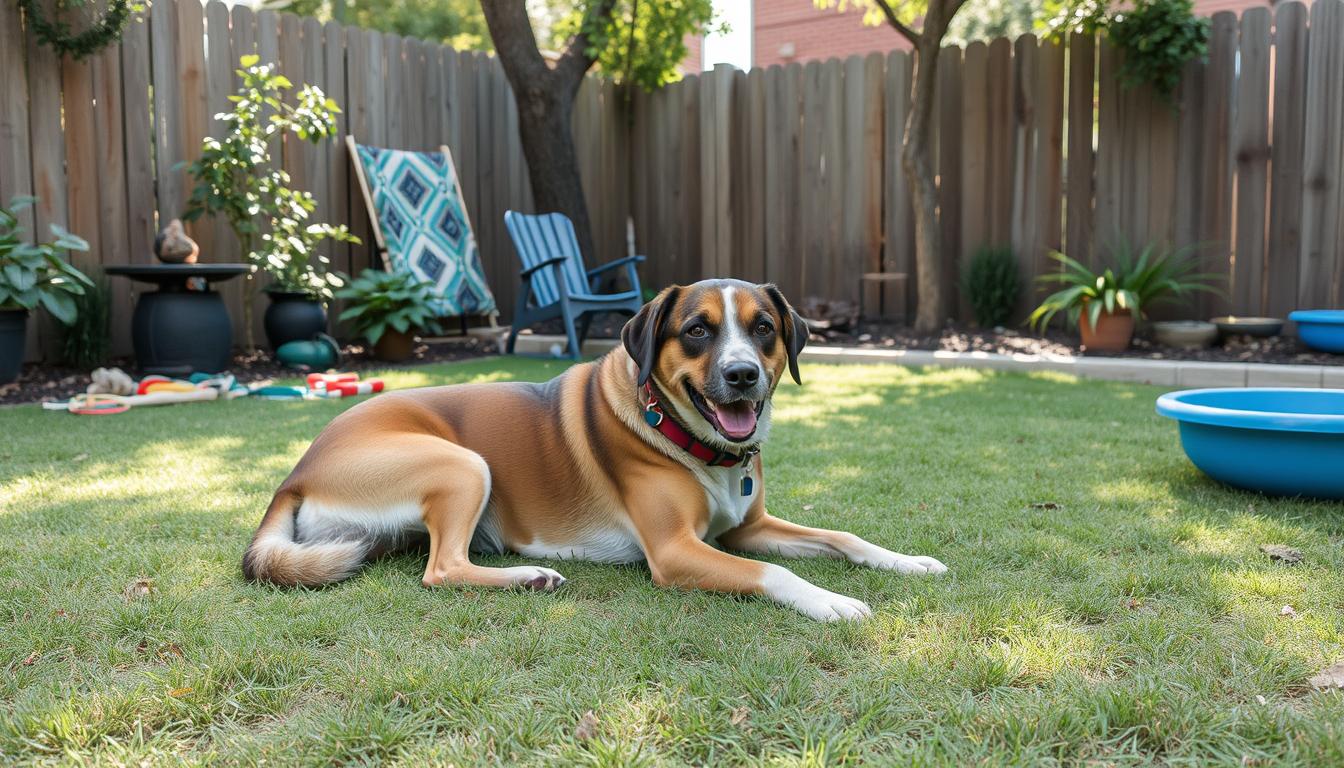
A well-secured and enriched yard keeps dogs happy and safe at home
Preventing your dog from escaping your yard requires a multi-faceted approach that addresses both physical containment and behavioral factors. By understanding why your dog wants to escape, creating secure physical barriers, implementing effective training, and enriching your yard environment, you can significantly reduce escape attempts.
Remember that consistency is key—regularly inspect your yard for potential escape routes, maintain training routines, and continue to make your yard an engaging place for your dog. With patience and the right approach, you can keep your furry family member safe while still allowing them to enjoy outdoor time.
Most importantly, always be prepared for the possibility of an escape by ensuring your dog has proper identification and you have an emergency plan in place. Your dog’s safety is worth the investment in time, training, and appropriate containment solutions.
Protect Your Furry Family Member
Implement these strategies today to create a secure, enriching yard environment that keeps your dog safe and happy.

